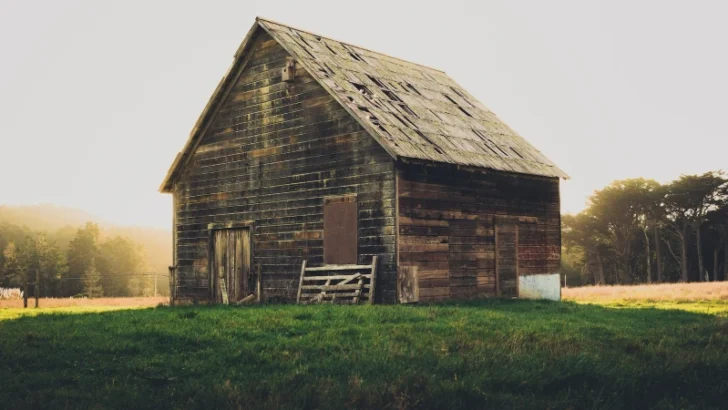Disclosure: This post may contain affiliate links, meaning we get a commission if you decide to make a purchase through our links, at no cost to you. Please read our disclosure for more info.
When driving through rural landscapes, one cannot help but notice the majestic and weathered beauty of old barns standing proudly amidst fields. These barns, once the backbone of agricultural communities, hold significant historical and cultural value. While their original purpose may have faded, the potential for new uses has emerged, breathing life into these aging structures. In this article, we will delve into the world of repurposing old barns and explore the various creative possibilities that can transform these relics into vibrant spaces once again.
In This Post:
Historical Significance of Barns
Barns have long been an integral part of agricultural life, serving as crucial storage spaces for crops, equipment, and livestock. They symbolize the hard work, resilience, and ingenuity of farming communities throughout history. The nostalgia associated with these structures invokes a sense of connection to our roots and the land that sustains us.
Throughout history, barns served as multi-purpose structures, fulfilling a wide range of needs. They were the central hub for storing harvested crops, protecting livestock, and housing the tools and equipment necessary for farming activities. Barns were meticulously designed to accommodate the specific requirements of each farming community, reflecting the region’s climate, local materials, and cultural practices.
Assessing the Condition of the Barn
Before embarking on any repurposing project, it is vital to assess the condition of the barn and ensure its structural integrity. Engaging the expertise of a professional architect or structural engineer is highly recommended. They can evaluate the stability of the foundation, roof, walls, and overall framework. By identifying necessary repairs and restoration work, you can lay a solid foundation for future transformation. With these old structures, the most common issue would be the roof trusses. Wooden trusses tend to rapidly deteriorate over time, and the best solution would be to work with a contractor that installs metal trusses for pole barns.
New Uses for Old Barns
Conversion into a Residence
Imagine waking up in a unique living space that seamlessly blends rustic charm with modern comforts. Converting an old barn into a residence offers a one-of-a-kind living experience. The soaring ceilings, exposed wooden beams, and spacious interiors create a sense of grandeur. However, it is essential to consider challenges such as insulation, plumbing, and zoning regulations when undertaking this endeavor.
Adaptive Reuse as a Community Center
Repurposing an old barn as a community center can revitalize the social fabric of a rural area. The barn can become a hub for various events and activities, such as local markets, workshops, and cultural gatherings. Its open layout and ample space make it ideal for accommodating large groups. Restoring a barn as a community center brings people together, fostering a sense of belonging and camaraderie.
Farm-to-Table Restaurant or Brewery
With the increasing popularity of locally sourced and sustainable cuisine, transforming an old barn into a farm-to-table restaurant or brewery creates a unique dining experience. The barn’s rustic ambiance provides an ideal backdrop for showcasing local produce and emphasizing the connection between food and the land. It also presents an opportunity to promote sustainable practices, such as using organic ingredients and reducing food waste.
Art Studio or Creative Workshop
The wide, open spaces and abundant natural light found in old barns make them perfect for art studios or creative workshops. Artists and artisans can find inspiration in the rustic surroundings, while the spacious interiors provide ample room for their creative endeavors. Transforming a barn into an art studio fosters artistic communities, encourages collaboration, and celebrates the beauty of handmade craftsmanship.
Storage or Workshop Space
Old barns offer immense storage potential, whether for personal use or as a workshop space. The sturdy construction and generous square footage allow for the safe keeping of vehicles, equipment, or recreational items. A barn workshop provides an ideal environment for pursuing hobbies, DIY projects, or even running a small business. The versatility of barns makes them adaptable to a wide range of storage and workshop needs.
Sustainable Practices and Green Design
As we embrace sustainable living practices, repurposing old barns presents an opportunity to incorporate green design principles. By utilizing eco-friendly materials, installing energy-efficient systems, and integrating renewable energy sources, we can minimize the environmental impact of the transformation. The possibilities for sustainable barn conversions are vast from solar panels to rainwater harvesting systems.
Financial Considerations
When undertaking a repurposing project, it is crucial to consider the financial aspects involved. The costs associated with the renovation and restoration of an old barn can vary depending on its size, condition, and desired purpose. However, it is important to remember that repurposing a barn is often a long-term investment that adds value to the property and the surrounding community. Exploring funding options, grants, and local resources can help offset some of the expenses.
Takeaway
Repurposing old barns is not merely about preserving historical structures; it is about breathing new life into them and creating spaces that serve modern needs while honoring their rich heritage. Whether transformed into a residence, a community center, a farm-to-table destination, an art studio, or a storage/workshop space, these barns become catalysts for creativity, sustainability, and community engagement. By repurposing old barns, we pay homage to our agricultural past while embracing a future filled with innovation, collaboration, and a deep appreciation for our roots.

